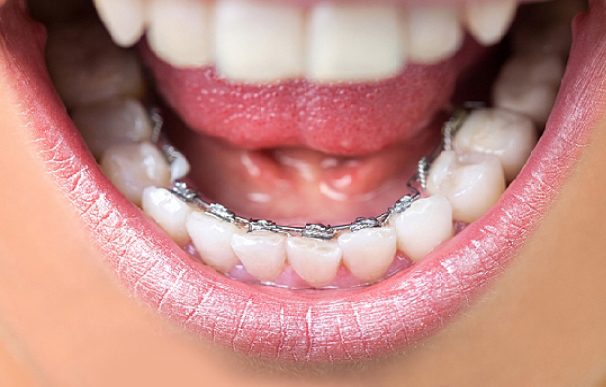What are Lingual Braces
When it comes to orthodontic treatment, Traditional Metal Braces have been the go-to for many years. However, advancements in technology have spurred the development of other types of braces that can offer more discreet options for those seeking orthodontic treatment. One such option is Lingual Braces.
Lingual Braces are a type of braces that are fixed behind teeth. This makes them a popular choice for adults or teenagers who may feel self-conscious about wearing traditional braces. Lingual Braces are also a good option for people who play wind instruments, contact sports or have a profession that requires a lot of public speaking as they don’t cause any interference.
Orthodontic Experts, a leading provider of orthodontic treatment, offers Lingual Braces for patients seeking a more discreet option for orthodontic treatment. Our team of experienced orthodontists is dedicated to providing high-quality treatment to achieve optimal results for their patients. Get in touch with us today to learn more about our orthodontic services.
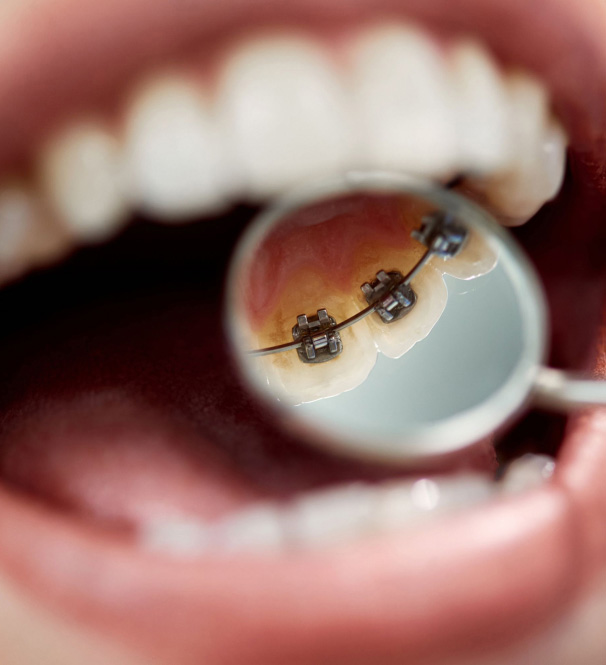
How Are Lingual Braces Applied and Work
The process of applying Lingual Braces involves taking impressions of the teeth and using these to create a custom bracket for each tooth. Once the brackets are ready, they are bonded to the teeth and connected with a wire. Since the brackets and wires are on the back of the teeth, they can straighten patients’ teeth without anyone knowing. As the braces are put in place, they apply gentle, constant pressure to the teeth to gradually move them into the desired position. The treatment process can take longer than traditional braces and may require more frequent adjustments, but the end result is a beautifully aligned smile.
Advantages of Lingual Braces
Lingual Braces are similar to traditional braces, except the brackets and wires are attached to the back of the teeth instead of the front. Here are some advantages of choosing Lingual Braces as your orthodontic treatment option:
- Highly Discreet
One of the most significant benefits of choosing Lingual Braces is their discreet nature. Since the brackets and wires are attached to the back of the teeth, they are not visible to others when you smile, talk, or eat. This is especially beneficial for those who may feel self-conscious or embarrassed about wearing braces, as Lingual Braces can provide a more discreet and confident orthodontic experience.
- Greater Control
Lingual Braces provide greater control and precision in repositioning the teeth. The brackets positioned to the back of the teeth provide a more direct and customizable force on the teeth. This allows for more accurate and specific movement of the teeth, ultimately resulting in a better alignment and smile.
- Quick Results
While the treatment time may vary for each patient, Lingual Braces can provide quick results in achieving a straight and aligned smile. With consistent wear and proper care, Lingual Braces typically take around 12-24 months to complete the treatment process. However, since Lingual Braces provide greater control and precision in repositioning the teeth, some patients may see faster results.
Disadvantages of Lingual Braces
While Lingual Braces may seem like a great option for those who want to straighten their teeth without visible braces, it’s important to consider the potential disadvantages. The drawbacks of Lingual Braces include:
- Anterior Teeth Intrusion
Anterior teeth intrusion occurs when the front teeth are pushed too far forward, causing them to appear full and prominent. This can be especially noticeable in those who have a small or recessed chin, as the prominent teeth can make the lower jaw appear even smaller. While anterior teeth intrusion is possible with traditional braces as well, Lingual Braces are more prone to causing this issue due to their placement behind the teeth.
- Anterior Bite Plane Effect
Anterior bite plane effect occurs when the teeth are moved too far forward, causing the back teeth to come together without touching the front teeth. This can create an open bite, which can lead to issues with eating and speaking. This can also create a less aesthetically pleasing look, as the open bite can make the upper and lower teeth appear disconnected.
- Vertical/Horizontal Bowing
Lingual Braces can cause vertical and/or horizontal bowing of the teeth. This is when the teeth are pushed forward in a curved or bowed shape, creating a less natural and symmetrical appearance. This can be especially noticeable in those with naturally straight teeth, as the curved or bowed shape can be quite jarring.
How we are making a difference
Orthodontic Experts is making a real difference in the world of orthodontics with our cutting-edge Lingual Braces. Before and after photos showcase the incredible transformations that Lingual Braces can make in as little as a few months. Lingual Braces offer the same benefits as traditional braces without any of the esthetic drawbacks, making them a popular choice for adults and teenagers alike. Patients can smile with confidence throughout their treatment, knowing that their braces are virtually invisible. With Orthodontic Experts, patients can achieve the smile they have always wanted without sacrificing their appearance.
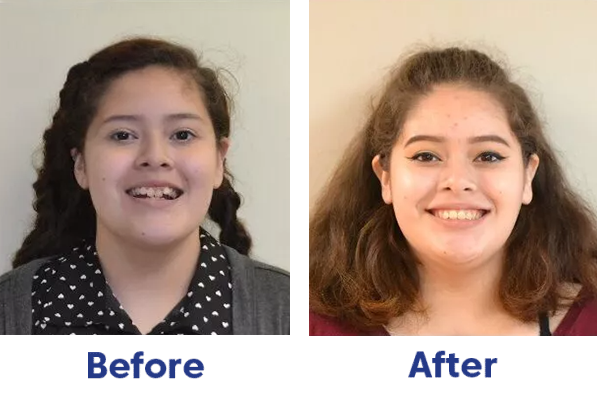
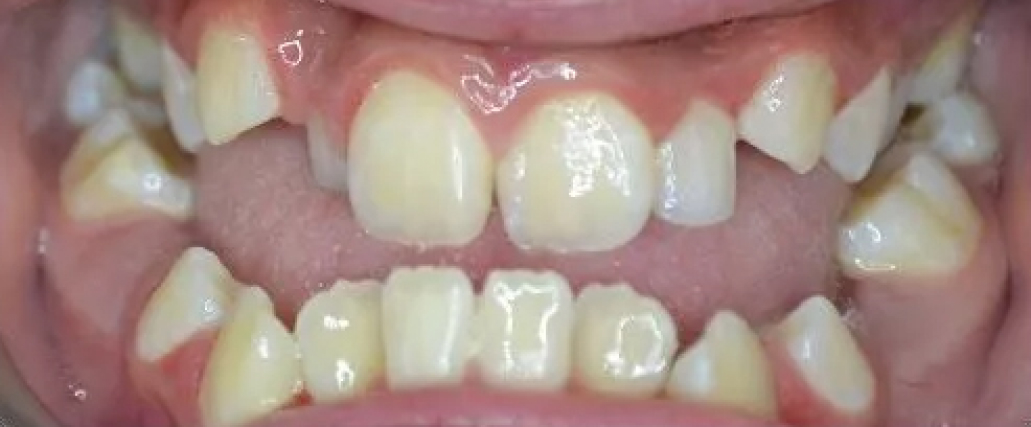
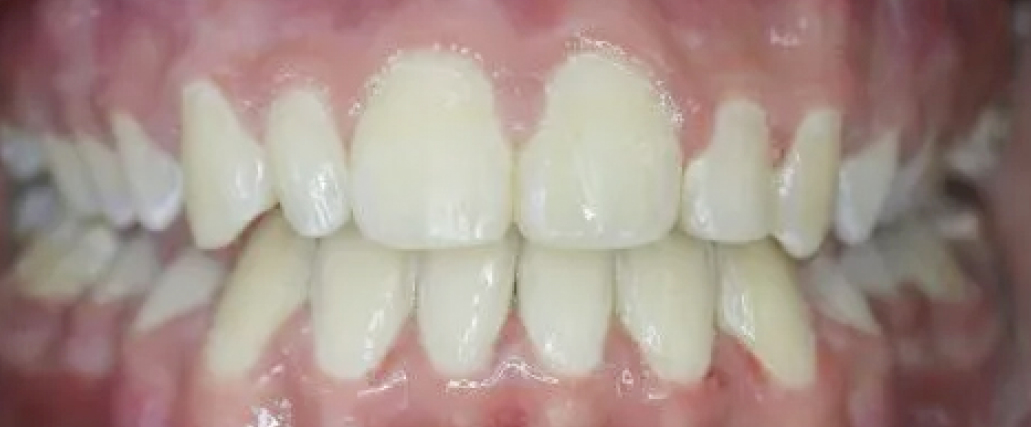
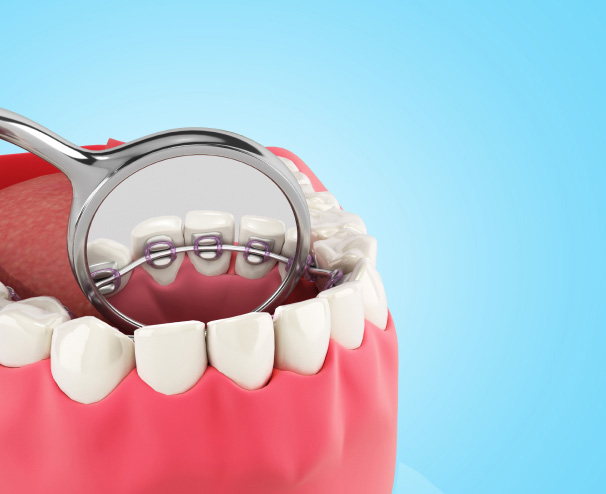
What Conditions Do Lingual Braces Treat?
Lingual Braces provide a highly personalized orthodontic treatment alternative that is effective for treating severely misaligned teeth. They are specifically designed to treat complicated orthodontic cases that require altering the heights of teeth, closing gaps, or correcting rotations. Whether the condition is mild or severe, Lingual Braces are an excellent choice for individuals seeking an effective and subtle orthodontic treatment option. The use of Lingual Braces allows patients to receive discreet orthodontics that still produces desired results.
Lingual Braces vs Traditional
Braces
Deciding between Traditional Metal Braces and Lingual Braces can be a tough decision – but don’t worry, Orthodontic Experts have got you covered! Let’s find out the differences between Lingual Braces and Traditional Metal Braces, so you can know which one is the best fit for you.
Esthetics
Traditional Metal Braces are placed on the front of your teeth, with brackets and wires visible to others. These braces are made of metal, which some patients may find aesthetically unappealing. Lingual Braces, on the other hand, are placed on the back of your teeth, hiding them away from view. This makes them a popular choice for patients who prefer their braces to be invisible.
Level of
Maintenance
Traditional Metal Braces often require frequent maintenance, with wearers needing to brush and floss carefully to avoid food getting stuck between the braces and their teeth. With Lingual Braces, you need to be extra careful with your oral hygiene as the wires and brackets are placed at the back of the teeth, and can be harder to clean.
Cost
Unlike Traditional Metal Braces, Lingual Braces are custom-made to fit the shape of your teeth. Lingual Braces tend to be more expensive than Traditional Metal Braces due to their custom design, the additional time to install, and the added difficulty of treatment.
How Much Do Lingual Braces Cost?
If you’re considering Lingual Braces for orthodontic treatment, you may be wondering about the cost. Orthodontic Experts is a leading provider of Lingual Braces and offers competitive pricing for our orthodontic treatments. The cost of Lingual Braces can vary depending on a variety of factors such as the complexity of the case and the duration of treatment. To eliminate your confusion, Orthodontic Experts provide a no-cost initial consultation to determine the most appropriate treatment plan and to provide an accurate estimate of the overall cost.

frequently asked questions
Who is a good candidate for Lingual Braces?
Lingual Braces are a discreet orthodontic treatment option that are placed on the backside of the teeth, making them nearly invisible. Individuals with good oral hygiene, sufficient spacing between teeth and minor to moderate bite issues are ideal candidates for Lingual Braces.
Do Lingual Braces work for everyone?
Lingual Braces work for most people, but there are some cases where they may not be the best treatment option. Individuals with significant underbite, deep overbites, or certain other orthodontic issues may not be eligible for Lingual Braces. Our experienced orthodontists at Orthodontic Experts will assess your individual case to determine if Lingual Braces are right for you.
How often do Lingual Braces need to be adjusted?
Like traditional braces, Lingual Braces will need to be adjusted every 6-8 weeks. These adjustments will help to ensure that the teeth are moving properly and the desired results are achieved.
Are Lingual Braces Permanent?
Lingual Braces are permanently fixed to the teeth as they require consistent wearing for success. On average, most patients wear Lingual Braces for 12-18 months, depending on the complexity of the case.
Will Lingual Braces Give Me A Lisp?
Like other orthodontic treatments, Lingual Braces may affect your speech. It may take a few days to adjust to having braces in your mouth. However, most patients do not experience any speech impediments once they acclimate to the braces.
Are Lingual Braces Painful?
While all orthodontic treatment can cause some discomfort, Lingual Braces typically do not cause significant pain. After the braces are first put on, you may experience some soreness or irritation, but this should subside within a few days.
